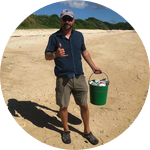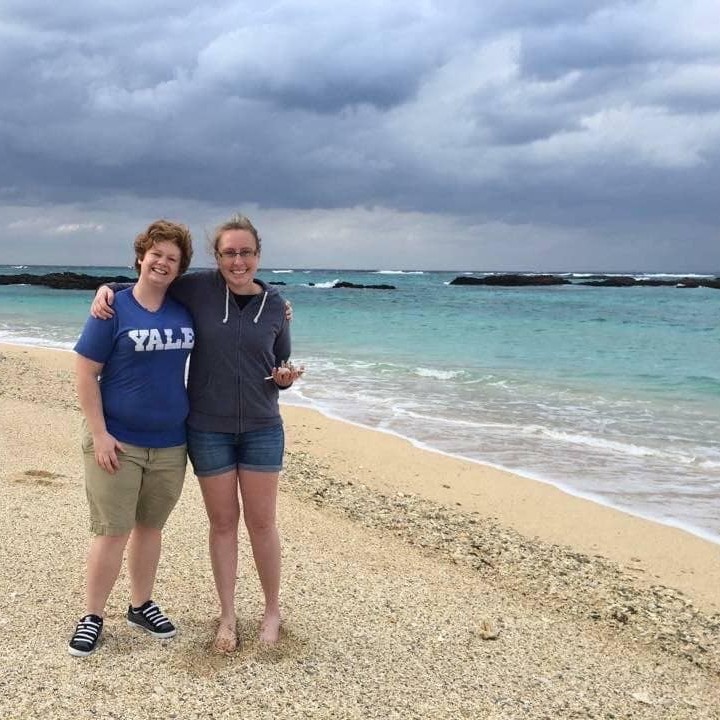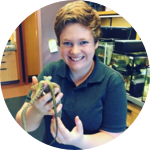About This Project
Observations of hermit crabs using beach trash such as plastic bottle caps in lieu of shells have increased in Okinawa, Japan. Shawn Miller has been working hard to help provide snail shells to over 140 hermit crabs using beach trash as shells and has left over 600 marked shells on beaches for these endangered crabs to use. We want to help by doing extensive surveys of beach environments in Okinawa to determine a possible cause of this behavior and offer potential solutions
Ask the Scientists
Join The DiscussionWhat is the context of this research?
The blueberry hermit crab (Coenobita purpureus) is a national living monument in Japan; however, they may be under threat from encroaching plastic waste. In 2014, local conservationist Shawn Miller discovered a blueberry hermit crab living in a plastic bottle cap in lieu of a shell. Since then, he has documented hundreds of individuals living in Okinawa with beach trash homes and has been spreading the word about this problem. Though this behavior was made known to the masses in 2018 in the “Planet or Plastic” issue of National Geographic showcasing a photo of a hermit crab in Okinawa with a plastic bottle cap home by Shawn, hermit crabs have been observed in Japan with beach trash homes as far back as 1990.
What is the significance of this project?
Coenobita purpureus is endemic to the Ryukyu Archipelago (Okinawa) and southern islands in Japan with a very narrow range. All species of Coenobita are endangered in the Ogasawara Islands east of the Ryukyus Islands. Their shells protect females’ eggs, aid with hydration and thermoregulation, and provide protection from predators. Crabs are important for the maintenance of beaches and are key drivers in tropical coastal forest recruitment because the crabs prey on fruits, seeds, and seedlings. They also process leaf litter and generate microhabitats rich in carbon. Hermit crabs are essential to the ecosystem and they are under threat, so it is important to understand why these crabs have resorted to using plastic homes and measure the extent of the problem.
What are the goals of the project?
We plan to collaborate with local scientists in completing beach transect surveys of plastic waste and hermit crabs in Okinawa. We want to compare areas with high volumes of plastic waste washing up on the beach in touristic regions of Okinawa to "wilder" areas which still suffer from plastic waste washing up on shore to test one theory that hermit crabs are resorting to using plastic waste for shells because all of the natural shells have been collected as souvenirs. Ideally, we would do several 100 meter long transects on each beach and calculate percent and type of plastic cover. Then we would catch as many hermit crabs as possible to determine what percentage of crabs are using plastic waste. We would then do extensive beach clean ups of the areas we study
Budget
We will be collaborating with two Japanese marine biologists and one conservationist living in Okinawa. Travel to Okinawa, and the various study sites via car or ferry to remote islands as well as accommodation for all of us in remote areas of Okinawa is expensive, which is why a majority of the budget reflects this. In the field, we will build a half meter square from PVC pipe for sampling quadrats and use tape rules to make transects- these will all be purchased locally. We will have to purchase two inexpensive waterproof cameras to photograph the transects on the beach. To store all the photo data, we will purchase 2 SD cards for the cameras and a hard drive. We will need garbage bags, work gloves, and trash pickers to safely complete the planned beach clean-ups at each location we survey, and there is a fee to dispose of the trash we collect. We plan to financially compensate two local Japanese research assistants for their time and expertise in the field.
Endorsed by
 Project Timeline
Project Timeline
During summer, the hermit crabs breed and release larvae into the water at the shore. So, the ideal time to find many hermit crabs out actively is between early June to late August. we plan to spend two weeks in Okinawa surveying as many beaches as possible in populated and remote areas. Then, data will be taken back to the lab and analyzed in the following weeks.
May 12, 2023
Project Launched
Aug 17, 2023
Travel to Okinawa and complete beach surveys (2 weeks)
Aug 31, 2023
Analyze data (a few weeks)
Sep 30, 2023
Write a status update for project backers
Oct 01, 2023
Write draft manuscript and prepare press release of findings
Meet the Team
Team Bio
Our team of marine biologists and local conservationists have extensive experience working in the field in Okinawa and great working relationships with each other as we have all collaborated on projects and field work in the past. We are all passionate about conservation and have been wanting to complete these surveys for years. We can't wait to help these crabs and find the potential cause of this issue.
Jessica Gordon
I'm a Research Technician at the University of Essex in the UK where I study deep-sea coral connectivity with Michelle Taylor. I completed my masters in Okinawa with James Reimer where I studied shallow water corals. Ever since I learned about the hermit crabs suffering from plastic pollution, I have wanted to survey the extent of the problem and try to help them.
Shawn Miller
I'm a conservation photographer living in Okinawa. I work to help hermit crabs using plastic shells and provide them with a natural shell. I have been recording this behaviour for several years now. I'm excited to work on this project and uncover the reason behind why this is occurring.
James Reimer
I'm a marine biologist at the University of the Ryukyus focusing on ecology and molecular biology
Lab Notes
Nothing posted yet.
Additional Information
We plan to focus on locations on several islands in the Rykyus where there are wild pristine beaches, tourist beaches, and wild beaches with plastic waste washed ashore. Several hundred meter beach transects will be set up along each surveyed beach. Photographs will be taken along the transect, and analyzed for plastic and shell counts. In addition to searching for hermit crabs during their most active periods (dawn and dusk). We will provide clean natural shells for hermit crabs to change into if they like. We may also do surveys of the turbo snail populations around the areas we study as those naturally provide shells for the hermit crabs when they die. This would help us test if overfishing of snails is causing a lack of natural shells.
Project Backers
- 41Backers
- 17%Funded
- $1,840Total Donations
- $44.88Average Donation





